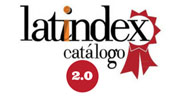Development and innovation of electronic systems in an automobile: a review
DOI:
https://doi.org/10.29019/enfoqueute.v10n1.350Keywords:
technological advances; automotive mechatronics; autonomous; innovation; networks.Abstract
This article presents a study of the technological advances in the electronic part of an automobile, based on an analysis of the technical, economic, productive and environmental specifications considered in the design, development and innovation of components of a vehicle that meet the requirements of the automotive companies. It systematically explains the idea and content of the innovation systems implemented in vehicles in recent years, in the electrical-electronic part, after several studies carried out by scientists, researchers and innovation analysts in the field of automotive electronics. The transformations occurred in the last years in the electrical-electronic part of a vehicle are discussed and a comparative analysis of the modifications and / or improvements in the characteristics of the automotive systems is elaborated, in order to comply with the existing regulations regarding energy consumption. , performance, waste treatment, comfort, safety, among others. The introduction of new sensors, control units and actuators, related to microelectronics, telematics and multimedia to vehicles, provides profound changes in the design, production, operation and diagnosis of a car, which have been gradually implemented in the systems of brakes , transmission, steering, safety, comfort and engine.
Downloads
References
Bonet, E. (2017). La revolución electrónica (Vol. 8). Ed. Universidad de Cantabria.
Cook, J., Sun, J., Buckland, J., Kolmanovsky, I., Peng, H., y Grizzle, J. (2006). PenAutomotive powertrain control-a survey. Asian Journal of Control, 8 (3), 237-260.
Davó, M. (2012). Desarrollo de aplicación de firmware para gestión de imágenes y de vídeo (Bachelor's thesis).
Fernández, R. (2017). Estudio de mercado de la incorporación de sistemas de confort, asistencia y seguridad en los vehículos.
Fiarchild Semiconductor. (2012). Anual Report. San José: Cal: Fiarchild Semiconductor.
Figueroa, H. (2015). Estudio y análisis del sistema multiplexado del vehículo híbrido toyota prius.
García, I. (2015). Sistema colaborativo de notificaciones integrado en ordenador de a bordo.
Greenstein, S. (1997). What does industry convergence mean. Competing in the age of digital convergence.
Henriquez, E. (4 de 05 de 2018). engadget. Obtenido de https://www.engadget.com/es/2011/10/24/car-to-x-el-nuevo-sistema-de-comunicacion-entre-vehiculos-de-bm/
Herrerías, J. (2016). Conceptualització i disseny d'una aplicació d'oci basada en Android Auto.
Industria CCOO. (2018). Situación y perspectivas en el sector del automóvil, medidas ambientales, digitalización y automatización de la industria. Madrid: Area de Estrategicas Sectoriales. Obtenido de http://industria.ccoo.es/9ddeee3ef0745110d18ae92f9a4bc706000060.pdf
Lammers, D. (Julio de 2016). Nano Chip. Obtenido de http://www.appliedmaterials.com/nanochip/nanochip-fab-solutions/july-2016/cover-story-driving-innovation-cars-electronics-converge
Lara, R. (2014). De sistema mecánico a sistema tecnológico complejo: El caso de los automóviles. Contaduría y administración, 59 (2), 11-39.
Leen, G., y Heffernan, D. (2002). Expanding automotive electronic systems. Computer. 35 (1), 88-93.
Lucas, F. (2016). Software de simulación del comportamiento de sistemas de control de vehículos en función de parámetros electrónicos y medioambientales.
Nishiguchi, T. (1994). Strategic industrial sourcing: The Japanese advantage. Oxford University Press on Demand.
Ordóñez, S. (2005). Empresas y cadenas de valor en la industria electrónica en México: Electronics Firms and its Insertion in Value Chains. Economía UNAM, 2 (5), 90-111.
Parera, A. (2000). Sistemas de seguridad y confort en vehículos automóviles. Marcombo.
París, A. (2003). Aplicaciones electronicas del automovil 2. Vivat Academia, (25), 37-48.
Rojas, J., Bustos, J., y Ordoñez, D. (2017). Transporte público inteligente al alcance de sus manos. Enfoque UTE, 122-134.
Santa, J., Gómez, A., y Sánchez, M. (2008). Architecture and evaluation of a unified V2V and V2I communication system based on cellular networks. Computer Communications, 31 (12), 2850-2861.
Schöner, H. (2004). Automotive mechatronics. Control engineering practice, 12 (11), 1343-1351.
Downloads
Published
Issue
Section
License
The authors retain all copyrights ©.
- The authors retain their trademark and patent rights, as well as rights to any process or procedure described in the article.
- The authors retain the right to share, copy, distribute, perform, and publicly communicate the article published in Enfoque UTE (for example, post it in an institutional repository or publish it in a book), provided that acknowledgment of its initial publication in Enfoque UTE is given.
- The authors retain the right to publish their work at a later date, to use the article or any part of it (for example, a compilation of their work, lecture notes, a thesis, or for a book), provided that they indicate the source of publication (authors of the work, journal, volume, issue, and date).
























